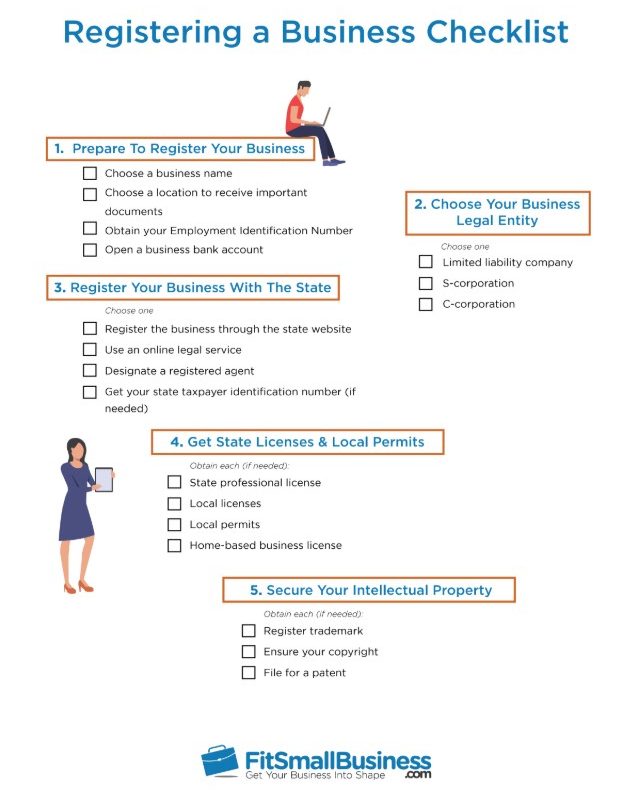Laying the Foundation: Understanding Your Business Idea
Developing a clear and well-defined business idea is the first step to starting a successful venture. This involves identifying your target audience, unique selling proposition (USP), and revenue streams. A thorough understanding of your business idea will help you create a solid foundation for your company and inform your decision-making process as you move forward.
One of the most critical aspects of understanding your business idea is identifying your target audience. Who are your ideal customers? What are their needs, wants, and pain points? What motivates them to make purchasing decisions? Answering these questions will help you create a customer avatar, which will guide your marketing and sales efforts.
In addition to identifying your target audience, it’s essential to develop a unique selling proposition (USP). Your USP is what sets your business apart from the competition and makes your product or service unique. It’s the reason why customers will choose your business over others. A strong USP will help you differentiate your business and attract customers who are looking for what you offer.
Revenue streams are another critical aspect of understanding your business idea. How will you generate revenue? Will you offer products or services? Will you use a subscription-based model or a one-time payment model? Identifying your revenue streams will help you create a financial plan and make informed decisions about your business.
To validate your business idea, it’s essential to conduct market research and analyze your competitors. Market research will help you understand your target audience, their needs, and the market trends. Analyzing your competitors will help you understand the competitive landscape and identify areas for differentiation.
Some of the key steps to starting a business include conducting market research, analyzing competitors, and developing a unique selling proposition. By following these steps, you can create a solid foundation for your business and set yourself up for success.
Developing a Solid Business Plan: Your Roadmap to Success
A well-crafted business plan is the backbone of any successful venture. It serves as a roadmap, guiding entrepreneurs through the steps to starting a business and helping them stay focused on their goals. A comprehensive business plan outlines the company’s mission, vision, and objectives, as well as its marketing, sales, and financial strategies.
When creating a business plan, it’s essential to start with a clear and concise executive summary. This section should provide an overview of the business, including its products or services, target market, and unique selling proposition (USP). The executive summary should be no more than two pages and should entice readers to learn more about the business.
The business plan outline should include the following components:
- Company Description: Provide an overview of the business, including its history, mission, and vision.
- Market Analysis: Conduct market research to identify the target audience, industry trends, and competitors.
- Products or Services: Describe the products or services offered by the business, including their features and benefits.
- Marketing and Sales Strategy: Outline the marketing and sales tactics used to reach the target audience and drive revenue.
- Financial Projections: Provide financial projections, including income statements, balance sheets, and cash flow statements.
- Management and Organization: Describe the company’s organizational structure, including key personnel and their roles.
When writing a business plan, it’s crucial to be realistic and conservative in financial projections. Entrepreneurs should also be prepared to adapt their plan as the business evolves. A solid business plan is a living document that guides the company’s growth and development.
In addition to the components listed above, a business plan should also include a section on risk management. This section should identify potential risks and outline strategies for mitigating them. By including a risk management plan, entrepreneurs can demonstrate their ability to think critically and prepare for potential challenges.
Developing a solid business plan takes time and effort, but it’s essential for starting a business. By following the steps outlined above, entrepreneurs can create a comprehensive plan that guides their business and helps them achieve success.
Securing Funding: Exploring Your Options for Startup Capital
Securing funding is a critical step in the process of starting a business. Entrepreneurs need to explore various options to determine which one best suits their needs. The right funding option can provide the necessary capital to launch and grow a successful business. In this section, we will discuss the pros and cons of different funding options, including bootstrapping, crowdfunding, angel investors, and small business loans.
Bootstrapping is a popular funding option for startups. It involves using personal savings or revenue from early customers to fund the business. The advantages of bootstrapping include maintaining control and ownership, avoiding debt, and developing a lean and efficient business model. However, bootstrapping can be challenging, especially for businesses that require significant upfront investment.
Crowdfunding is another option for startups. Platforms like Kickstarter, Indiegogo, and GoFundMe allow entrepreneurs to raise funds from a large number of people, typically in exchange for rewards or equity. Crowdfunding offers several benefits, including validation of the business idea, marketing and promotion, and access to a community of supporters. However, crowdfunding campaigns can be time-consuming and require significant effort to succeed.
Angel investors are wealthy individuals who invest in startups in exchange for equity. They often provide valuable guidance, mentorship, and networking opportunities. Angel investors can be a good option for businesses that require significant funding and have high growth potential. However, entrepreneurs need to be prepared to give up some control and ownership, and angel investors can be selective and demanding.
Small business loans are a traditional funding option for startups. They offer a lump sum of money that needs to be repaid with interest. Small business loans can provide the necessary capital to launch and grow a business, but they can also be challenging to obtain, especially for businesses with limited credit history or collateral.
To attract investors, entrepreneurs need to create a persuasive pitch that showcases their business idea, market potential, and growth prospects. A good pitch should include a clear and concise executive summary, a detailed business plan, and a compelling presentation. Entrepreneurs should also be prepared to answer questions and provide additional information to investors.
In conclusion, securing funding is a critical step in the process of starting a business. Entrepreneurs need to explore various options, including bootstrapping, crowdfunding, angel investors, and small business loans, to determine which one best suits their needs. By understanding the pros and cons of each option and creating a persuasive pitch, entrepreneurs can increase their chances of securing the necessary capital to launch and grow a successful business.
When it comes to the steps to starting a business, securing funding is a crucial step that can make or break a venture. By exploring different funding options and creating a persuasive pitch, entrepreneurs can set themselves up for success and achieve their business goals.
Building a Strong Team: Hiring the Right Talent for Your Venture
Building a strong team is a crucial step in the process of starting a business. A skilled and dedicated team can help entrepreneurs achieve their business goals and drive success. In this section, we will discuss the importance of building a strong team, including hiring employees, contractors, or partners, and provide advice on how to define company culture, create job descriptions, and conduct effective interviews.
Defining company culture is essential to building a strong team. Company culture refers to the values, mission, and vision of the organization. It sets the tone for how employees interact with each other and with customers. Entrepreneurs should define their company culture early on and communicate it clearly to their team. This will help attract the right talent and ensure that everyone is working towards the same goals.
Creating job descriptions is another critical step in building a strong team. Job descriptions should outline the responsibilities, skills, and qualifications required for each role. They should also include information about the company culture and values. This will help attract candidates who are a good fit for the organization and ensure that they understand what is expected of them.
Conducting effective interviews is also essential to building a strong team. Interviews should be structured to assess the candidate’s skills, experience, and fit with the company culture. Entrepreneurs should ask behavioral questions that assess the candidate’s past experiences and how they handled different situations. They should also ask questions about the candidate’s goals and motivations to ensure that they are aligned with the company’s vision.
In addition to hiring employees, entrepreneurs may also need to hire contractors or partners to help with specific tasks or projects. When hiring contractors or partners, entrepreneurs should clearly define the scope of work, expectations, and timelines. They should also establish a communication plan to ensure that everyone is on the same page.
Building a strong team is one of the most important steps to starting a business. By defining company culture, creating job descriptions, and conducting effective interviews, entrepreneurs can attract the right talent and build a team that is dedicated to achieving their business goals.
When it comes to the steps to starting a business, building a strong team is a critical step that can make or break a venture. By following the tips outlined above, entrepreneurs can build a team that is skilled, dedicated, and aligned with their company’s vision.
In today’s competitive business landscape, having a strong team is more important than ever. By investing time and effort into building a strong team, entrepreneurs can gain a competitive edge and achieve long-term success.
Registering Your Business: Navigating the Legal and Administrative Process
Registering your business is a crucial step in the process of starting a business. It involves navigating the legal and administrative process to ensure that your business is properly established and compliant with all relevant laws and regulations. In this section, we will walk you through the process of registering your business, including choosing a business structure, obtaining necessary licenses and permits, and registering for taxes.
Choosing a business structure is one of the first steps in registering your business. The most common business structures include sole proprietorship, LLC, and corporation. Each structure has its own advantages and disadvantages, and the right choice will depend on your specific business needs and goals. For example, a sole proprietorship is a simple and inexpensive option, but it offers limited liability protection. An LLC, on the other hand, offers more liability protection and tax benefits, but it is more complex and expensive to set up.
Once you have chosen a business structure, you will need to obtain any necessary licenses and permits. These may include a business license, sales tax permit, and employer identification number (EIN). The specific licenses and permits required will depend on your business type and location. For example, if you are starting a restaurant, you will need to obtain a food service permit and a liquor license.
In addition to obtaining licenses and permits, you will also need to register for taxes. This includes obtaining an EIN and registering for state and local taxes. You will also need to obtain any necessary tax permits, such as a sales tax permit.
Obtaining an EIN is a critical step in registering your business. An EIN is a unique number assigned to your business by the IRS, and it is used to identify your business for tax purposes. You will need to use your EIN to open a business bank account, apply for credit, and file taxes.
Opening a business bank account is another important step in registering your business. This will help you to separate your personal and business finances, and it will make it easier to manage your business expenses and income. When opening a business bank account, you will need to provide your EIN and other business documentation, such as your business license and articles of incorporation.
Registering your business is one of the key steps to starting a business. By following the steps outlined above, you can ensure that your business is properly established and compliant with all relevant laws and regulations. This will help you to avoid any potential legal and financial problems, and it will give you a solid foundation for success.
When it comes to the steps to starting a business, registering your business is a critical step that can make or break your venture. By taking the time to properly register your business, you can ensure that you are setting yourself up for success and avoiding any potential pitfalls.
Establishing a Strong Online Presence: Building Your Brand and Website
Establishing a strong online presence is crucial for any business, and it starts with creating a professional website. A website is often the first impression that potential customers have of a business, and it can make or break their decision to engage with the company. In this section, we will discuss the importance of creating a professional website and establishing a strong online presence, including registering a domain name, choosing a web hosting service, and designing a visually appealing website.
Registering a domain name is the first step in creating a professional website. A domain name is the web address that customers will use to access the website, and it should be easy to remember and relevant to the business. For example, if the business name is “Smith’s Bakery,” the domain name could be “smithsbakery.com.” It’s also important to choose a domain name that is available and not already in use by another company.
Once the domain name is registered, the next step is to choose a web hosting service. A web hosting service provides the server space and technical support needed to host the website. There are many web hosting services available, and the right one will depend on the specific needs of the business. For example, some web hosting services offer shared hosting, while others offer dedicated hosting or cloud hosting.
Designing a visually appealing website is also crucial for establishing a strong online presence. The website should be easy to navigate and should include clear and concise content that communicates the business’s message. The website should also be optimized for search engines, which means that it should include relevant keywords and meta tags that help search engines understand the content of the website.
In addition to creating a professional website, establishing a strong online presence also involves developing a social media marketing strategy. Social media platforms such as Facebook, Twitter, and Instagram provide businesses with a way to connect with customers and promote their products or services. A social media marketing strategy should include creating engaging content, responding to customer inquiries, and using paid advertising to reach a wider audience.
Creating engaging content is key to a successful social media marketing strategy. The content should be relevant to the business and should include a mix of promotional and educational content. For example, a bakery could post pictures of their products, share recipes, and offer special promotions to customers. The content should also be optimized for each social media platform, which means that it should be formatted and written in a way that is specific to each platform.
Establishing a strong online presence is one of the key steps to starting a business. By creating a professional website and developing a social media marketing strategy, businesses can establish a strong online presence that attracts and engages customers. This can help to drive sales, increase brand awareness, and establish the business as a leader in its industry.
When it comes to the steps to starting a business, establishing a strong online presence is a critical step that can make or break a venture. By following the tips outlined above, businesses can create a professional website and develop a social media marketing strategy that helps them to succeed in today’s digital age.
Launching and Growing Your Business: Overcoming Common Challenges
Once you’ve laid the groundwork for your business, it’s time to launch and start growing. This phase can be both exciting and intimidating, as you’ll face new challenges and uncertainties. To help you navigate this critical period, we’ll outline the essential steps to starting a business and provide guidance on overcoming common obstacles.
A pre-launch checklist is crucial to ensure a smooth transition from planning to execution. This should include finalizing your business plan, securing funding, registering your business, and establishing a strong online presence. By ticking off these essential tasks, you’ll be well-prepared for the launch phase.
Developing a marketing strategy is vital to attracting and retaining customers. This should include identifying your target audience, creating engaging content, and leveraging social media platforms. By understanding your customers’ needs and preferences, you can tailor your marketing efforts to resonate with them and drive sales.
Tracking key performance indicators (KPIs) is essential to measuring your business’s progress and making data-driven decisions. This may include monitoring website traffic, social media engagement, customer acquisition costs, and revenue growth. By analyzing these metrics, you can identify areas for improvement and adjust your strategy accordingly.
Despite careful planning, entrepreneurs often face unexpected challenges. Common obstacles include cash flow management, talent acquisition, and adapting to changing market conditions. To overcome these hurdles, it’s essential to stay agile, prioritize problem-solving, and maintain a growth mindset.
One of the most significant challenges entrepreneurs face is managing cash flow. This can be mitigated by creating a comprehensive financial plan, managing expenses, and maintaining a cash reserve. By prioritizing financial stability, you can weather unexpected storms and make strategic investments in your business.
Talent acquisition is another critical challenge, particularly for startups. To attract and retain top talent, it’s essential to define your company culture, offer competitive compensation packages, and provide opportunities for growth and development. By building a strong team, you can drive innovation, improve productivity, and achieve your business objectives.
Finally, adapting to changing market conditions is crucial to long-term success. This requires staying attuned to industry trends, monitoring customer feedback, and being willing to pivot when necessary. By embracing a culture of continuous improvement, you can stay ahead of the competition and achieve sustainable growth.
By following these steps to starting a business and overcoming common challenges, you can set your venture up for success and achieve your entrepreneurial goals. Remember to stay adaptable, prioritize problem-solving, and maintain a growth mindset to navigate the inevitable ups and downs of the startup journey.
Staying Adaptable and Resilient: The Key to Long-Term Success
Embarking on the journey of starting a business can be a thrilling experience, but it’s not without its challenges. As an entrepreneur, it’s essential to stay adaptable and resilient in the face of obstacles and setbacks. By fostering a growth mindset, prioritizing self-care, and continuously evaluating and improving your business strategy, you can overcome common hurdles and achieve long-term success.
A growth mindset is a crucial component of entrepreneurial success. It involves embracing challenges as opportunities for growth and development, rather than threats to your ego or business. By adopting a growth mindset, you can stay focused on finding solutions rather than getting bogged down by problems. This mindset also allows you to stay open to new ideas, feedback, and perspectives, which can help you innovate and stay ahead of the competition.
Prioritizing self-care is also vital for entrepreneurs. Starting a business can be a high-stress, high-pressure experience, and neglecting your physical and mental health can have serious consequences. By making time for exercise, meditation, and relaxation, you can maintain your energy and focus, even in the face of adversity. Additionally, taking care of your physical and mental health can help you build resilience, which is critical for navigating the ups and downs of entrepreneurship.
Continuous evaluation and improvement are also essential for long-term success. This involves regularly assessing your business strategy, identifying areas for improvement, and making adjustments as needed. By staying agile and adaptable, you can respond to changes in the market, customer needs, and other external factors that may impact your business. This also allows you to stay focused on your goals and make progress towards achieving them.
One of the most significant challenges entrepreneurs face is dealing with failure. However, failure is an inevitable part of the entrepreneurial journey, and it’s essential to learn from your mistakes rather than getting discouraged. By adopting a growth mindset and prioritizing self-care, you can develop the resilience needed to bounce back from setbacks and keep moving forward.
Another critical aspect of staying adaptable and resilient is building a support network. This can include mentors, peers, and colleagues who can offer guidance, advice, and encouragement. By surrounding yourself with people who understand the challenges of entrepreneurship, you can gain valuable insights, stay motivated, and overcome common obstacles.
In addition to building a support network, it’s also essential to stay connected with your customers and community. By listening to their feedback, concerns, and needs, you can stay attuned to the market and make adjustments to your business strategy accordingly. This also helps you build strong relationships with your customers, which can lead to loyalty, retention, and ultimately, long-term success.
By following these steps to starting a business and staying adaptable and resilient, you can overcome common challenges and achieve long-term success. Remember to stay focused on your goals, prioritize self-care, and continuously evaluate and improve your business strategy. With persistence, determination, and a growth mindset, you can navigate the ups and downs of entrepreneurship and build a thriving business that brings value to your customers and community.







